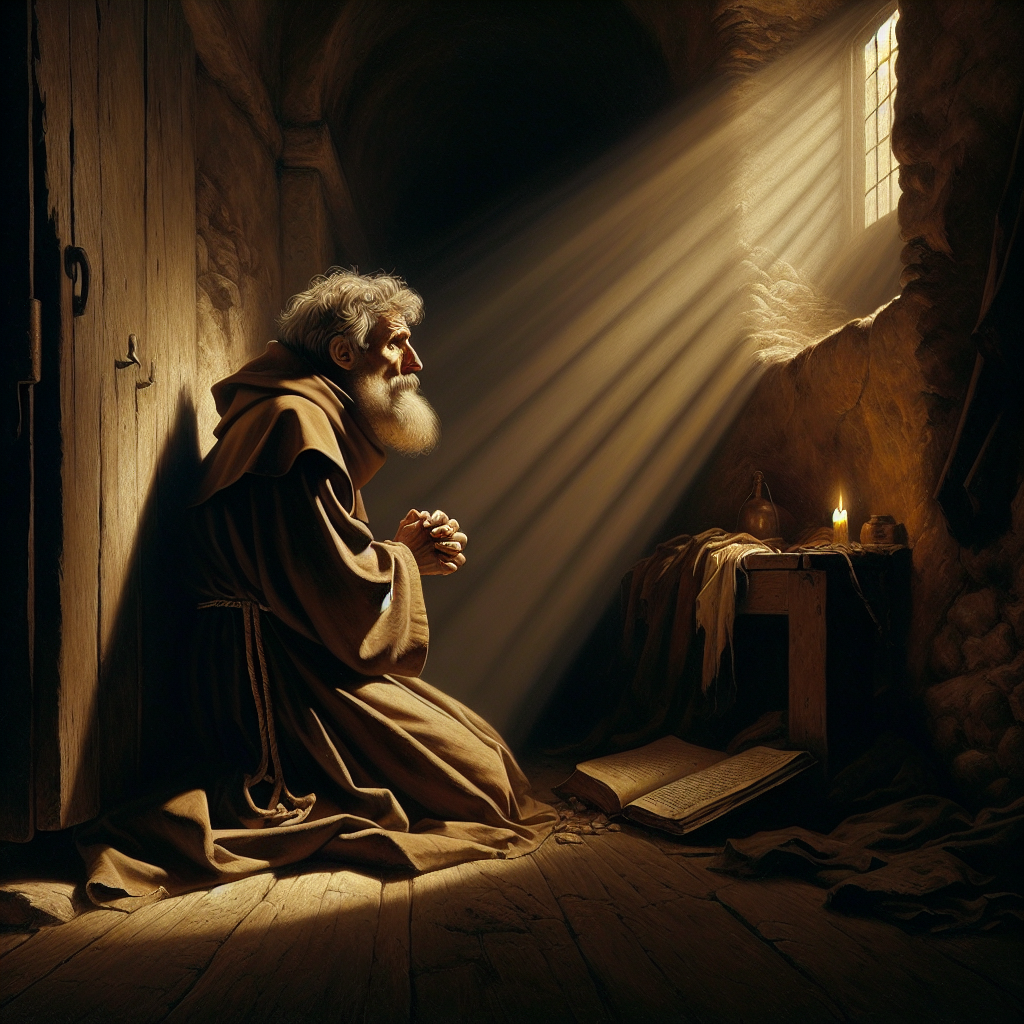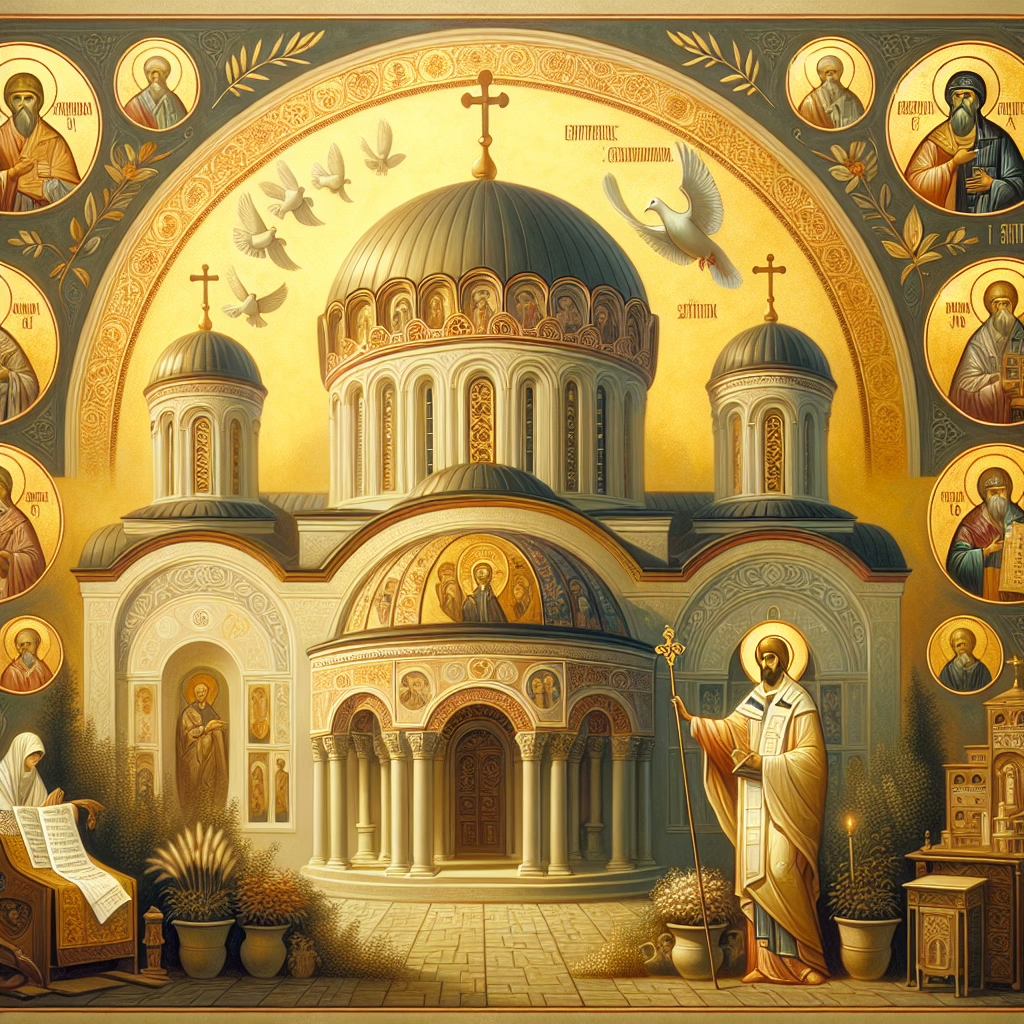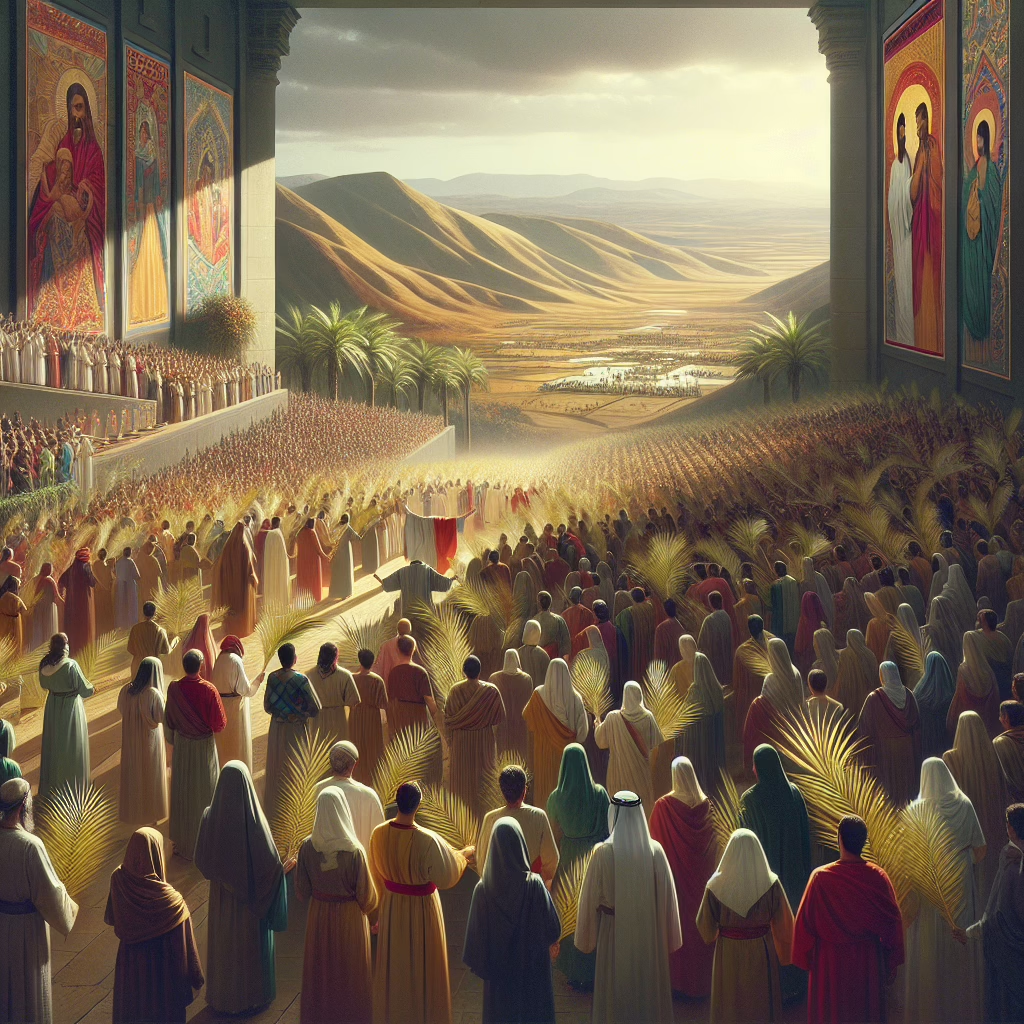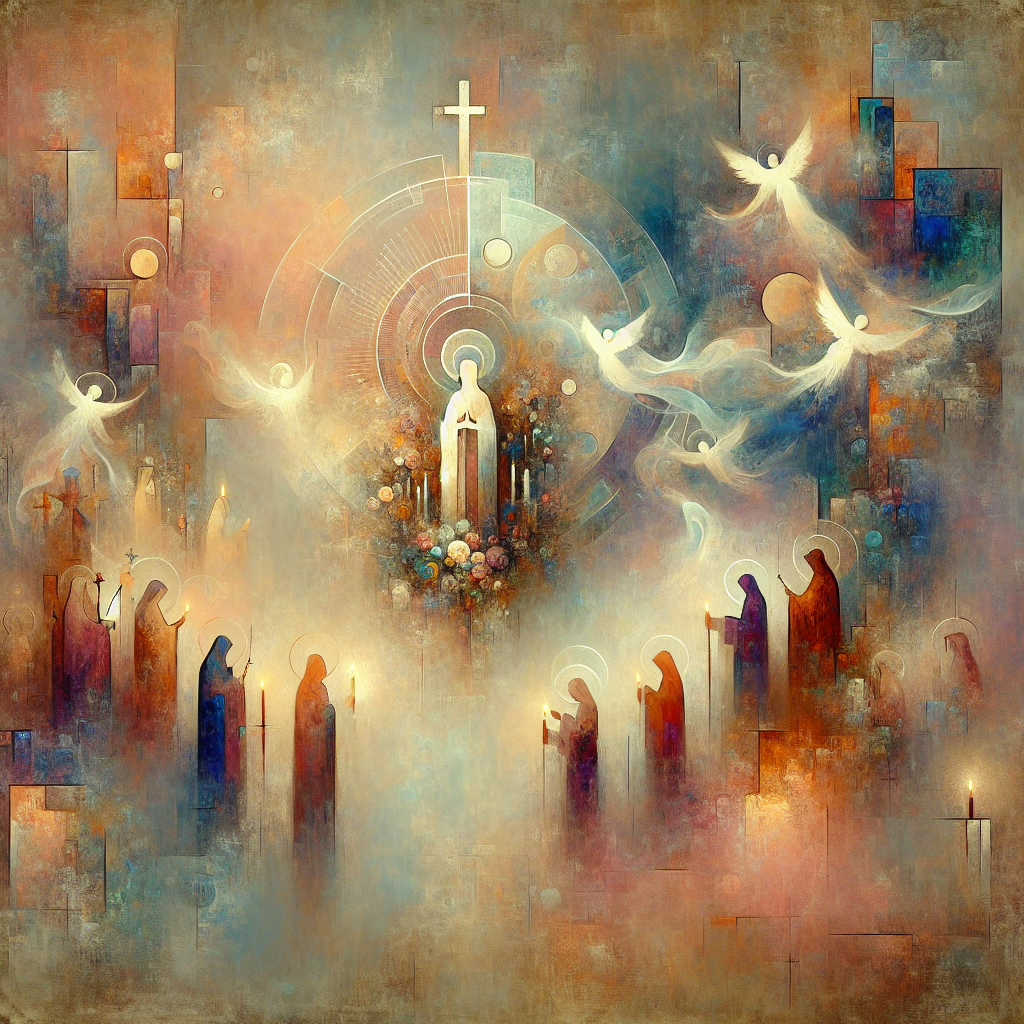The Spiritual Journey of St. Bruno: A Life of Solitude and Devotion
Introduction: Discovering the Spiritual Path of St. Bruno
In the annals of Catholic history, few figures embody the ideals of solitude and devotion quite like St. Bruno. Born in 11th century Cologne, Germany, Bruno’s life would become a testament to the transformative power of faith and the profound impact of a life dedicated to God. As the founder of the Carthusian Order, St. Bruno left an indelible mark on the spiritual landscape of the Catholic Church, inspiring generations of faithful to seek a deeper connection with the divine through contemplation and prayer.
This exploration of St. Bruno’s life will take us on a journey through his early years, the founding of the Carthusian Order, his unwavering beliefs, and the lasting legacy that continues to influence the Church today. We’ll delve into the miracles attributed to his intercession, the devotions he inspired, and the lessons we can draw from his remarkable life of faith.
1. The Life and Background of St. Bruno
1.1 Early Life and Family Influence
St. Bruno was born in 1030 into the wealthy and influential Hardebüst family in Cologne, Germany. From an early age, Bruno was immersed in an environment that valued both worldly success and spiritual devotion. This unique blend of influences would shape his future path in profound ways.
As a young man, Bruno excelled in his studies, particularly in philosophy and theology. His intellectual prowess, combined with his deep spiritual inclinations, set him apart from his peers. It was during these formative years that the seeds of his future vocation were planted.
The bustling city of Cologne, with its grand cathedrals and rich religious traditions, provided a backdrop for Bruno’s spiritual development. The echoes of prayers and the flickering of candles in sacred spaces spoke to his soul, nurturing a desire for a life dedicated to God.
[For a more detailed account of St. Bruno’s life, visit St. Bruno Biography]
2. Founding of the Carthusian Order
2.1 Establishing a Hermitage in the Chartreuse Mountains
In 1084, at the age of 54, St. Bruno felt an irresistible call to a life of solitude and prayer. Gathering six companions, he journeyed to the Chartreuse Mountains in southeastern France. There, in the rugged wilderness, they established a hermitage that would become the birthplace of the Carthusian Order.
The Carthusian way of life, as envisioned by St. Bruno, was built on the twin pillars of solitude and community. Monks lived in individual cells, spending most of their time in prayer, study, and manual labor. Yet, they came together regularly for communal worship and mutual support.
St. Bruno’s vision for the Carthusian Order was revolutionary in its emphasis on extreme solitude combined with periodic community gatherings. This unique approach to monastic life had a profound impact on the spiritual landscape of medieval Europe and continues to inspire contemplatives to this day.
As Pope Benedict XVI noted:
“St. Bruno and his companions, in their search for God, chose the harshest and most solitary place in the Alps. In doing so, they bore witness to the Church’s constant need for men and women who devote their entire lives to the glory of God and the salvation of souls.”
Learn more about the Carthusian Order founded by St. Bruno
3. Beliefs and Teachings of St. Bruno
3.1 Profound Faith and Profession of Belief
St. Bruno’s spiritual life was characterized by an unwavering faith in the fundamental doctrines of the Catholic Church. His profession of faith, made shortly before his death in 1101, stands as a powerful testament to his orthodoxy and deep theological understanding.
In this profession, St. Bruno explicitly affirmed his belief in:
- The Holy Trinity
- The real presence of Christ in the Eucharist
- The efficacy of the sacraments
- The authority of the Church
His clear articulation of these beliefs was particularly significant in light of the heresies prevalent during his time, such as tritheism and impanation. St. Bruno’s steadfast adherence to orthodox doctrine served as a beacon of truth in an era of theological confusion.
As the Catechism of the Catholic Church reminds us:
“The Christian faith is not a ‘religion of the book.’ Christianity is the religion of the ‘Word’ of God, a word which is ‘not a written and mute word, but the Word which is incarnate and living’.” (CCC 108)
St. Bruno’s life and teachings embodied this living faith, demonstrating that true belief goes beyond mere intellectual assent to encompass a life transformed by encounter with the living God.
Explore more about the teachings of St. Bruno
4. Miracles, Veneration, and Legacy
4.1 Miracles and Veneration at Bruno’s Tomb
Following St. Bruno’s death in 1101, numerous miracles were reported at his tomb. These supernatural occurrences served to confirm the sanctity of his life and fueled the growth of devotion to him among the faithful.
Many of the reported miracles involved healings, particularly of those afflicted by evil spirits. As a result, St. Bruno became known as a powerful intercessor for those struggling with spiritual oppression or demonic influence.
The veneration of St. Bruno’s relics became an important aspect of devotion to him. Pilgrims would travel great distances to pray at his tomb, seeking his intercession and drawing inspiration from his life of radical commitment to God.
St. Bruno’s legacy extends far beyond the miracles associated with him. His founding of the Carthusian Order ensured that his spiritual ideals would continue to influence the Church for centuries to come. The order’s commitment to silence, solitude, and contemplation has served as a powerful witness to the importance of these practices in the spiritual life.
5. Lessons and Devotions Inspired by St. Bruno
5.1 Emphasis on Solitude and Prayer
One of the most enduring lessons from St. Bruno’s life is the importance of solitude and prayer in deepening one’s relationship with God. In our fast-paced, constantly connected world, his example challenges us to create spaces of silence and stillness in our lives.
Practical ways to incorporate this lesson might include:
- Setting aside regular times for silent prayer
- Creating a dedicated prayer space in your home
- Participating in silent retreats
- Practicing the Lectio Divina method of scripture reading
St. Bruno’s life reminds us that true spiritual growth often requires stepping back from the noise and distractions of daily life to focus on our relationship with God.
5.2 Devotion to the Blessed Virgin Mary
St. Bruno’s deep devotion to the Blessed Virgin Mary was a hallmark of his spiritual life. This aspect of his spirituality offers a model for Catholics today who seek to deepen their relationship with Mary.
Ways to cultivate Marian devotion in the spirit of St. Bruno include:
- Praying the Rosary daily
- Meditating on the mysteries of Mary’s life
- Consecrating oneself to Mary
- Celebrating Marian feast days with special devotion
As Pope Francis has said:
“Mary is not only the bridge joining us to God; she is more. She is the road that God travelled to reach us, and the road that we must travel in order to reach him.”
6. Application and Influence of St. Bruno Today
6.1 Case Study: St. Bruno’s Parish in California
The enduring influence of St. Bruno can be seen in modern Catholic communities around the world. One striking example is St. Bruno Catholic Church in San Bruno, California.
This vibrant parish community exemplifies how St. Bruno’s teachings can be applied in a contemporary context:
- Emphasis on Evangelization: The parish actively uses modern technology and social media to spread the Gospel message, reflecting St. Bruno’s zeal for sharing the faith.
- Balance of Contemplation and Action: While embracing modern methods of outreach, the parish maintains a strong focus on prayer and contemplation, echoing St. Bruno’s commitment to spiritual depth.
- Community Engagement: The parish’s state-of-the-art Parish Center serves as a hub for community activities, demonstrating how St. Bruno’s ideals of community can be lived out in today’s world.
- Marian Devotion: Following St. Bruno’s example, the parish fosters a strong devotion to the Blessed Virgin Mary through various programs and prayer groups.
This real-world application of St. Bruno’s teachings shows how his spiritual legacy continues to shape and inspire Catholic communities in the 21st century.
Visit the official website of St. Bruno’s Parish for more information
Conclusion: Embracing the Spiritual Legacy of St. Bruno
As we reflect on the life and teachings of St. Bruno, we are reminded of the timeless value of solitude, prayer, and unwavering faith. His journey from a life of privilege to one of radical devotion continues to inspire and challenge us today.
St. Bruno’s legacy teaches us that true spiritual growth often requires stepping away from the noise and distractions of the world to focus on our relationship with God. His emphasis on solitude and contemplation offers a much-needed antidote to the frenetic pace of modern life.
Moreover, St. Bruno’s devotion to the Blessed Virgin Mary and his steadfast orthodoxy in the face of heresy remind us of the importance of staying rooted in the core truths of our faith. His life demonstrates that profound spiritual experiences and intellectual rigor can go hand in hand in the pursuit of holiness.
As we conclude our exploration of St. Bruno’s spiritual journey, let us take to heart the lessons of his life. May we be inspired to carve out moments of silence and solitude in our daily lives, to deepen our devotion to Mary, and to stand firm in our faith even in the face of challenges.
Let us pray for the intercession of St. Bruno, asking for the grace to live out our faith with the same courage, conviction, and devotion that he exemplified. May his example continue to guide and inspire us on our own spiritual journeys.
Call-to-Action: Take some time this week to incorporate a practice inspired by St. Bruno into your daily routine. Whether it’s setting aside 10 minutes for silent prayer, praying a decade of the Rosary, or reading about the Carthusian way of life, let St. Bruno’s legacy enrich your spiritual life.
For further reading and deepening your understanding of St. Bruno and the Carthusian Order, consider the following books:
- “Saint Bruno: The Carthusian” by André Ravier
This comprehensive biography offers a deep dive into the life of St. Bruno and the founding of the Carthusian Order. - “The Miracle at St. Bruno’s” by Philippa Carr
While a work of historical fiction, this novel provides an engaging look at the impact of St. Bruno’s legacy through the centuries.
May the peace and solitude that St. Bruno sought guide you on your own spiritual journey.






Leave a Reply